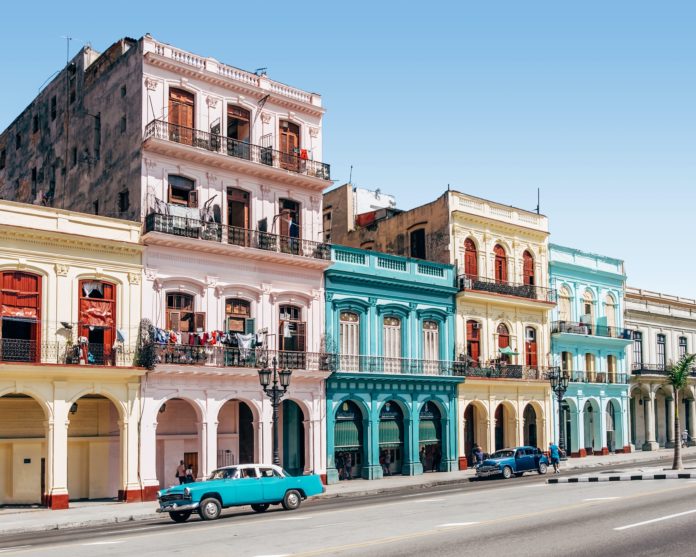Ever since hearing Camila Cabello’s “Havana” we can’t get the thought of visiting the capital of Cuba out of our heads. Between the pastel-colored buildings and Spanish architecture in Old Havana and the modern restaurants, Havana is a fascinating place to visit with a mix of the past and the present. During the day visit the museums, art galleries, churches, and historical and at night head to an outdoor cafe and listen to music. Here’s your guide to visiting Havana.
Best Time to Visit
The best time to visit Havana is between January and February. The Caribbean island has warm temperatures year-round, with the lows dropping to 65 F. Havana has just two seasons—wet and dry. The wet season is May to October and the dry season is November to April. Festivals happen all year, with Carnival happening in August.
How to Get Around
The best way to get around Havana is by foot as many of the popular attractions like Habana Vieja, El Malecón, and Museo de la Revolución are less than a mile apart. Taxis are another great option as are the vintage American automobiles. Stay away from buses or hitchhiking unless you speak fluent Spanish.
Where to Stay
Gran Hotel Manzana Kempinski La Habana
This 5-star hotel in the heart of the city is within walking distance of Paseo de Martí which is the city’s main thoroughfare, Old Havana, and the Museum of Fine Arts. There’s a fitness center, spa, rooftop swimming pool, many bars, and two restaurants.
Iberostar Parque Central
Iberostar Parque Central, a 5-star hotel, is just steps away from the National Capitol Building, popular restaurants, and museums. The hotel is a work of art with a Spanish colonial-style exterior and a tropical interior. The hotel has a rooftop pool, two bars, and several restaurants. Enjoy live performances from Cuban musicians at the lobby bars while sipping on some drinks.
Hotel Nacional de Cuba
Hotel Nacional de Cuba, a 4.5-star hotel, stands at Malecón, and it opened all the way back in 1930. Over the years, it’s welcomed Frank Sinatra, Fred Astaire, and Winston Churchill. What sets it apart from others is its architecture and historic relics. There’s also a swimming pool, bars, and restaurants.
What to Do
El Malecón’
To Cubans, El Malecón’ is the heart of the city. It’s a five-mile-long boulevard that stretches along the water. Havana Bay is on one side and the edges of Old Havana, Vedado, and Central Havana are on the other. The boulevard is a meeting point for locals and tourists.
Old Havana
This gorgeous neighborhood is iconic to the world and it was declared a UNESCO World Heritage site due to the area’s centuries-old architecture. Between the baroque and neoclassical designs and bright colors to the cobblestone-lined plazas, Old Havana is a beauty. Plus, the street entertainers and travelers from around the world are interesting to watch.
Museum of the Revolution
The best spot to learn about Cuba’s history is the Museum of the Revolution, which shows the life and times before the revolution and the events leading up to Fidel Castro’s uprising. There are tons of relics and artifacts including the blood-stained uniforms of the fallen from the Santiago de Cuba Moncada Barracks attack, bullet holes from an attempted assassination of Fulgencio Batista, and maps used for navigation during the war.
What to Eat
Ropa Vieja
This braised skirt steak simmered in a tomato sauce, green pepper, and sometimes onions. It’s served with loose white rice and fried plantains.
Moros Y Cristianos
Moros Y Cristianos are a classic and they consist of black beans stewed with white rice and then stuffed inside a pork shoulder marinated with sour orange, garlic, and oregano.
Tostones
These twice-fried plantains are usually smashed and fried into cakes and then deep-fried. Tostones make amazing side dishes and comfort food.












